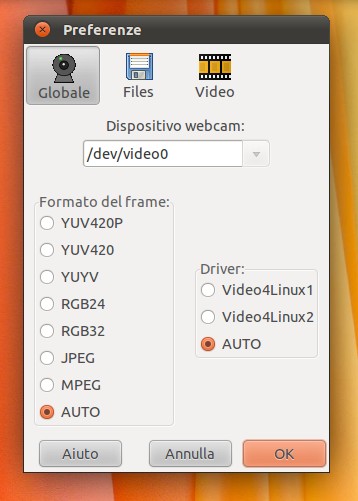Video4linux Driver For Mac
Product Overview Epiphan Systems™ DVI2PCIe™ is Epiphan's capture card internal frame grabber with a single-link DVI/VGA input. DVI2PCIe can capture video from any single link DVI, unencrypted HDMI video, VGA, or BNC/component video source up to 80 FPS. Full HD can be captured at a capture rate of 30 frames per second for 1080p video and video sources at any resolution up to 1920x1200 are supported. HD Video Capture Besides being able to capture from DVI, VGA, HDMI video sources, DVI2PCIe supports DisplayPort, Mini DisplayPort, and Thunderbolt sources using a converter cable, sold separately. Resolutions up to 1920x1200 are supported, up to 80 frames per second with a minimum capture rate of 30 frames per second. Windows, Mac OS, Linux Compatibility DVI2PCIe works with Windows, Mac OS, and Linux machines.

Drivers and software are available as free downloads. Key Features. Capture from DVI, VGA, HDMI, RGB, component sources.
Video4linux Driver For Mac
Support for DisplayPort, Mini DisplayPort, and Thunderbolt sources using a converter cable, sold separately. PCIe x4 form factor. Part Number. SW-29911 Brand. Epiphan Interface.
PCI Express 1.1;. x4. Connectors. One DVI-I type connector. With DVI2PCIe AV kit:. Two TRS 1/4' connectors. One S-Video connector.
Video4linux Driver For Mac Download

One 3.5mm audio line-in connector Compatibility. DVI (single link), VGA, HDMI (video only), S-Video. VGA Modes. HSYNC rate is between 15KHz and 150KHz.
Pixel rate is between 12MPixel/s and 270 MPixel/s for non-interlaced grab. Pixel rate is between 270 MPixel/s and 532MPixel/s for two consequent frame interlaced grab. Color Resolution. RGB24 (8:8:8), RGB16 (5:6:5), RGB8 (2:3:3), YUY2, UYUV Supported Resolutions. VESA modes: 720×400, 720x480, 640×480, 720x540, 800×600, 1024×768, 1360x768, 1280x800, 1152×864, 1152×900, 1280×960, 1400x1050, 1920x1080, 1280×1024, 1360x1024, 1600×1200, 1920x1200.
Custom VGA modes. Update Rate. Frame rate varies depending on resolution and capturing computer. 640×480. 85 fps. 800×600. 85 fps.
1024×768 85 fps. 1280×1024 85 fps. 1920×1080 60 fps. 1920×1200 60 fps OS Support. Windows 2000, XP, Vista, Windows 7 (i386, x64). Mac OS X 10.4 and up (ppc, i386, x8664). Linux (x86, x8664)2.
DirectShow (Windows), QuickTime (Mac OS X) and V4L (Linux) integration Additional Hardware. 128MB buffer RAM Dimensions. Low profile short card. 5.5'×2.53', 140mm×64mm.
On Linux, cv::VideoCapture can use the PS3 Eye via the standard Video4Linux drivers. On Windows and Mac, cv::VideoCapture cannot use the PS3 Eye. You will need to capture frames from the Eye using some other camera SDK, such as:. This works with Windows and Mac. It is free but probably subject to GPL because it contains some code copied from the Linux kernel.
(not just CL-Eye Driver) - This just works with Windows. It is commercial. Once you capture a frame using whichever camera SDK, you can create a cv::Mat from the captured data, as illustrated in the following partial code sample: int width = 320, height = 240; int matType = CV8UC3; // 8 bpp per channel, 3 channels void.pData; // Use the camera SDK to capture image data. SomeCaptureFunction(&pData); // Create the matrix. No data are copied; the pointer is copied. Cv::Mat mat(height, width, matType, pData).
Comments are closed.